Keighley |
|
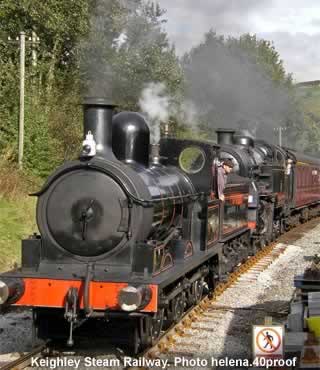 |
|||
Britain > Yorkshire Dales > Keighley |
||
One of West Yorkshire's oldest rail links |
||
Be careful when you say the name of this West Yorkshire town. It looks like it should be said as kee-ley, but the name defies its spelling, and is actually pronounced keith-ley. |
||
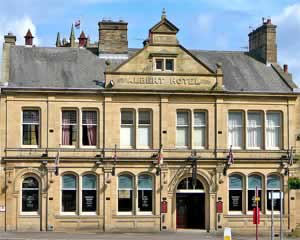 The Albert Hotel Photo Tim Green aka atoach |
||
This is one of the bigger settlements west of Leeds and Bradford, so it acts as a shopping hub for the smaller villages that surround it. Most of the larger stores are within the Airedale centre, a modern building on the main high street. |
||
 Airedale Centre Photo Mtaylor848 |
||
The town is most well known for its steam trains, operating all year round as part of the Keighley and Worth Valley Railway. There are many other heritage railways in the country, but each of them operate on only a fraction of their original length. This one is unique in that it still runs 8km to Oxenhope, just like it did on its opening day in 1867. |
||
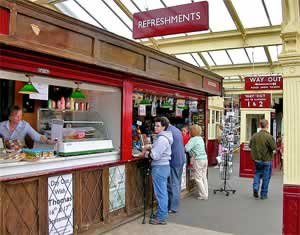 Keighley Station Photo dave.palmater |
||
Like many of Britain's railways, the Keighley and Worth line was closed in the 60s. However, it was reopened within the very same decade by a hastily formed preservation society. Even today, you can tell that the West Yorkshire locals are proud of their railway. It carries over 100,000 passengers a year, despite being run entirely by volunteers. |
||
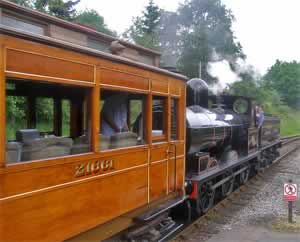 A Steam Train on the Keighley and Worth Valley Railway Photo pjo18 |
||
Although it's only 8 kilometres long, the journey to Oxenhope is an entertaining one. It begins with a tough climb up a steep slope. Steam billows from the engine's chimney as it hauls its carriages desperately onward. The first stop is at Ingrow, where train enthusiasts will want to alight. The village's Museum of Rail Travel has an impressive collection of old Victorian carriages. |
||
Keighley's heritage line rose to national fame in the 70s when it was featured heavily in a feature-length adaptation of "The Railway Children". The popular novel had already been adapted into a TV drama in the 60s, but it was this newer production that would prove to be the defining version. It was a huge success, and is still regularly ranked as one of the greatest British films ever made. Many of the Keighley and Worth line's trains were used during filming. Some of them are still in use, even after all these years. Much of the movie was shot at Oakworth station, the third stop on the line. The place has kept hold of its old charms by displaying old adverts, and by using gas lighting. |
||
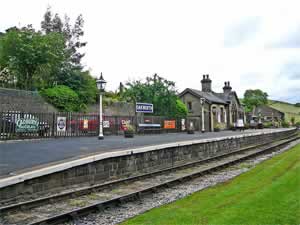 Oakworth Station Photo Tim Green aka atoach |
||
The Railway Children isn't Keighley's only connection to classic literature. The town is situated within an area of the Pennines known as Bronte Country. In the 19th century, this was the home of the three Bronte sisters, who wrote such classics as Jane Eyre and Wuthering Heights. They lived in the village of Haworth, which is one of the stations on the Keighley and Worth train line. A local museum tells their stories, and displays many of their possessions. Unfortunately, all three of them died at a young age, several years before the railway was completed. They would have had to walk 5 long kilometres to Keighley often. Thankfully though, you won't have to. |
||
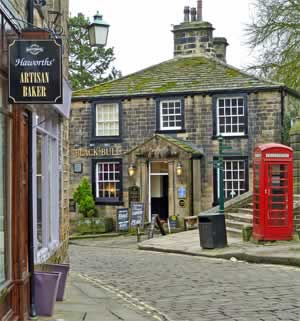 The nearby village of Haworth Photo Tim Green aka atoach |
||
|
||
Keighley and Worth Valley Railway runs a service most weekends and school holidays. A day rover ticket costs around £14 for adults, £7.50 for children (fares may vary according to the journey). The Railway Station, Haworth, Keighley, West Yorkshire, BD22 8NJ. Tel: 01535 645 214 |
||
|
Pocket Britain is optimised for use on a smartphone or tablet with internet access. All content is subject to copyright. All reasonable methods have been used to ensure information supplied is accurate at the time of publication. However, it is advisable to check information before relying on it. Privacy Policy |